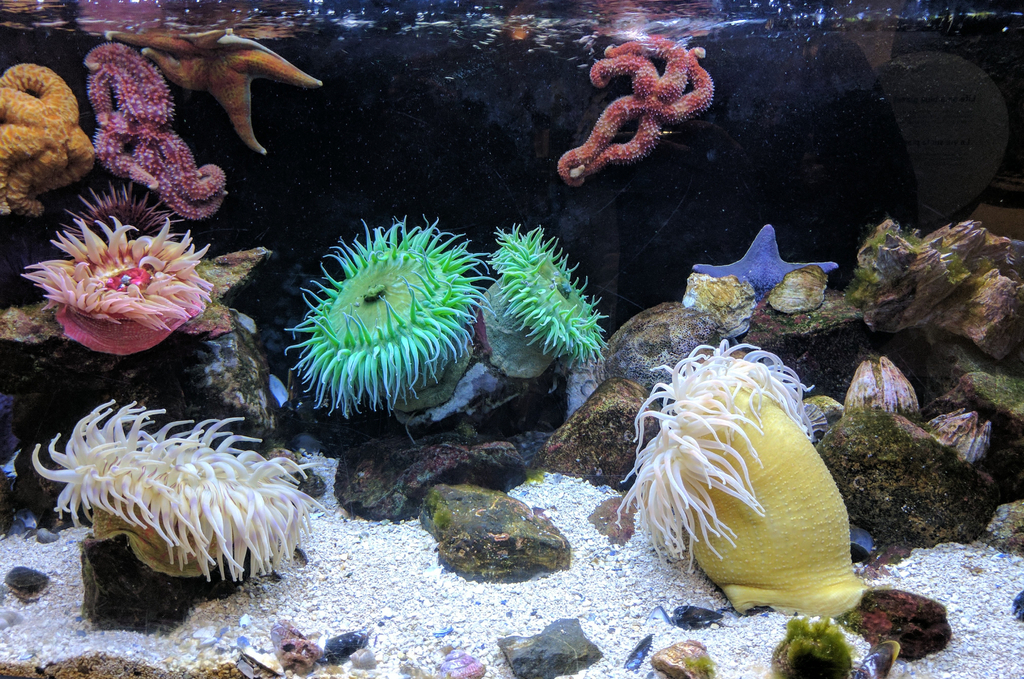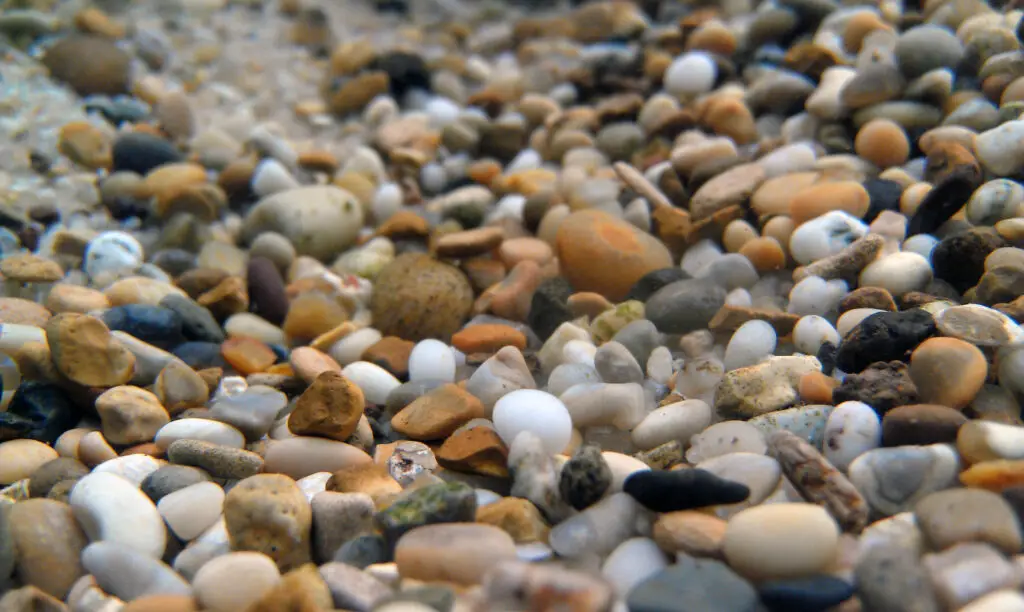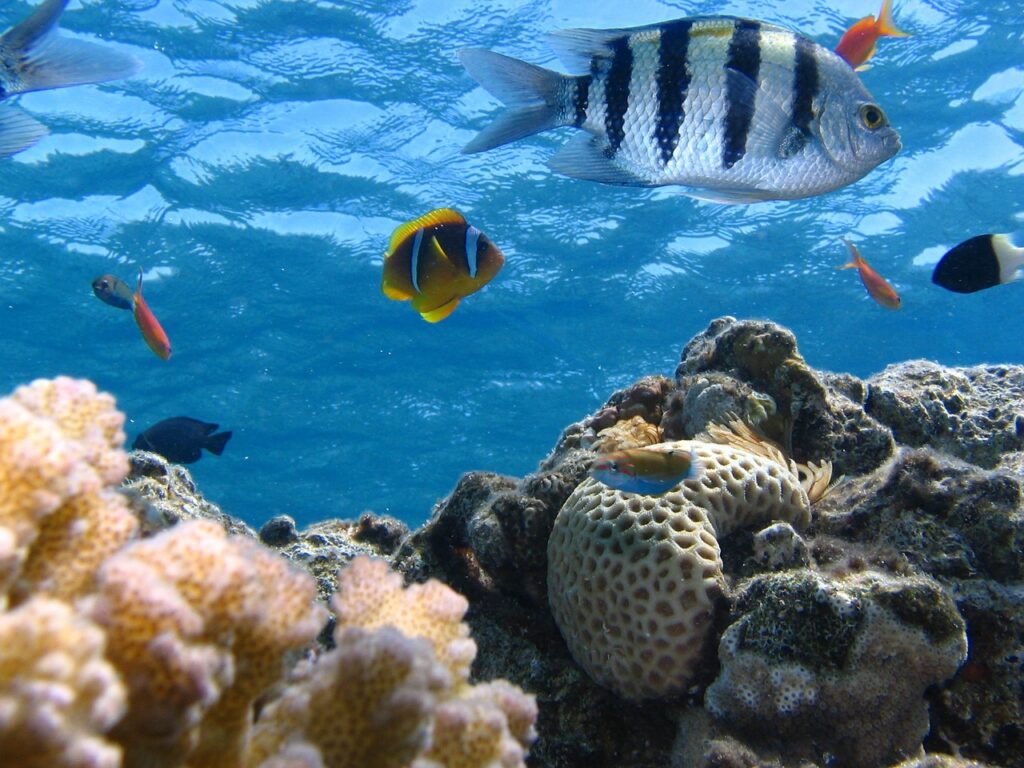Understanding the Aquarium Nitrogen Cycle
Embarking on the journey of aquarium ownership, you’ll encounter the pivotal nitrogen cycle process in aquariums. This natural sequence is the foundation for sustaining aquatic life in your fish tank. Mastering the aquarium nitrogen cycle is critical to the health and longevity of your underwater habitat.
Delve into the intricate steps of fish tank cycling, transforming harmful ammonia into less harmful compounds such as nitrites and, finally, into nitrates. Let’s unravel the essential components of ammonia conversion, the nitrite cycle, and the nitrate cycle, ensuring that your aquarium cycling leads to a thriving ecosystem for your finned friends.
Key Takeaways
- Grasping the complexity of the nitrogen cycle is vital for successful aquarium cycling.
- Ammonia conversion within the tank is the first step in mitigating potential dangers to aquatic life.
- Monitoring and managing the nitrite and nitrate cycles are crucial to prevent toxic buildups.
- Understanding each stage of the aquarium nitrogen cycle helps in maintaining optimal water conditions.
- Patience and regular testing are key to ensuring that your fish tank cycling process is complete.
- Intervening promptly when imbalances occur can save your aquarium inhabitants from harm.
- Staying informed on best practices for aquarium care fortifies the long-term health of your aquatic environment.
High Nitrites: Causes and Impacts
Identifying High Nitrite Levels
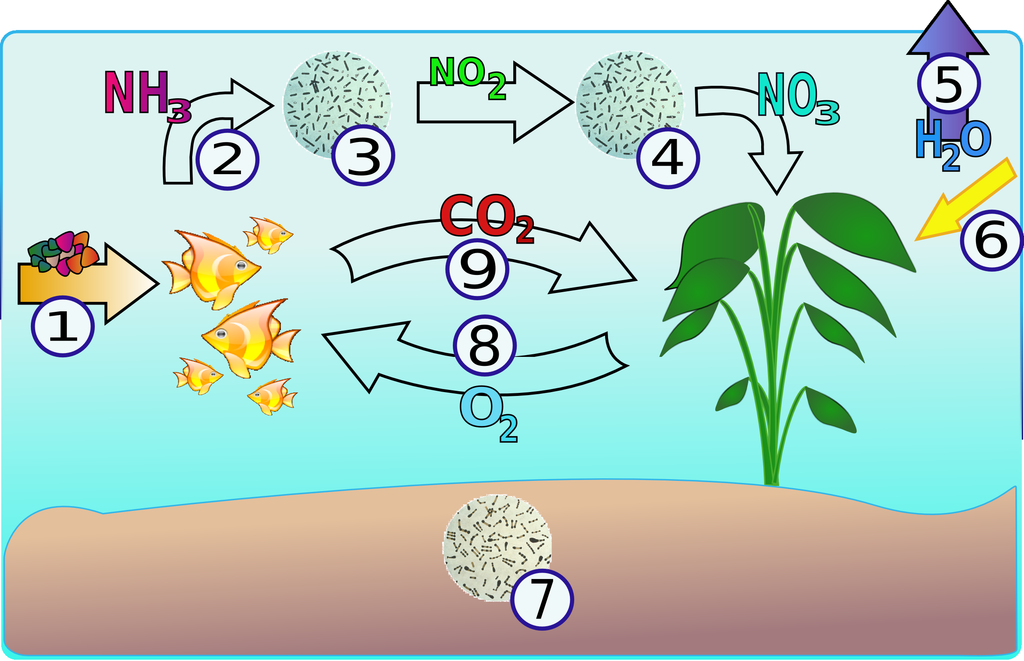
When cycling your tank, vigilance is key in recognizing the harmful state of high nitrites during the cycle. Regular testing is pivotal, as evident spikes in nitrite levels could indicate a cycle imbalance.
If testing reveals an elevation beyond the safe threshold, one must act quickly to prevent nitrite poisoning, which adversely affects the health of your aquatic inhabitants. Distinct from the relatively harmless nitrates, nitrites represent an intermediary yet toxic stage in the nitrogen cycle that must be expertly managed.
Biological Causes of Nitrite Spikes
A nitrite spike during the aquarium cycle may spring from diverse sources but often trails high ammonia readings that arise due to overfeeding, overstocking, or inadequate cycling preparation. Surprisingly, your choice of substrate could inadvertently invite a surge in nitrites; live sand, for example, harbors decomposing organics that release ammonia, bolstering nitrite levels.
Equally impactful is the tank’s physical design. Aquariums with minimal surface area for beneficial bacterial colonization, such as sleek, bare-bottom designs, struggle to support efficient cycling, thus grappling with high nitrite levels.
Effects on Fish and Plant Life
The repercussions of elevated nitrite levels can be grave for both fish and plants. Nitrite poisoning manifests through symptoms such as listlessness, gasping for air at the surface, and even loss of life among fish.
Plants, too, may exhibit stunted growth or decline due to the high toxicity. Tackling these high nitrite levels in your aquarium, therefore, becomes not merely a matter of fine-tuning parameters but a vital rescue operation.
Strategic interventions like partial water changes, specifically between 33% and 50%, help bring nitrites under control without the disruptive effects of substrate agitation or the use of chemicals that might hinder the cycling process.
| Condition | Impact | Recommended Action |
|---|---|---|
| Elevated Nitrite Levels | Potential for nitrite poisoning in fish; plant health decline | Water changes (33-50%) without substrate disturbance |
| High Ammonia Readings | Initial cause of nitrite spikes; toxic to fish | Reduce feedings, review stocking levels, reassess cycling preparations |
| Insufficient Surface Area | Delays in bacterial colonization; extended cycle duration | Introduce additional media with high surface area for bacterial growth |
| Live Sand Substrate | Excess waste accelerates ammonia and nitrites | Measure and monitor; delay ammonia additions until levels normalize |
| Overfeeding/Overstocking | Excess waste accelerating ammonia and nitrites | Manage feeding regimen and stock levels appropriately |
Managing Nitrate Levels in the Aquarium
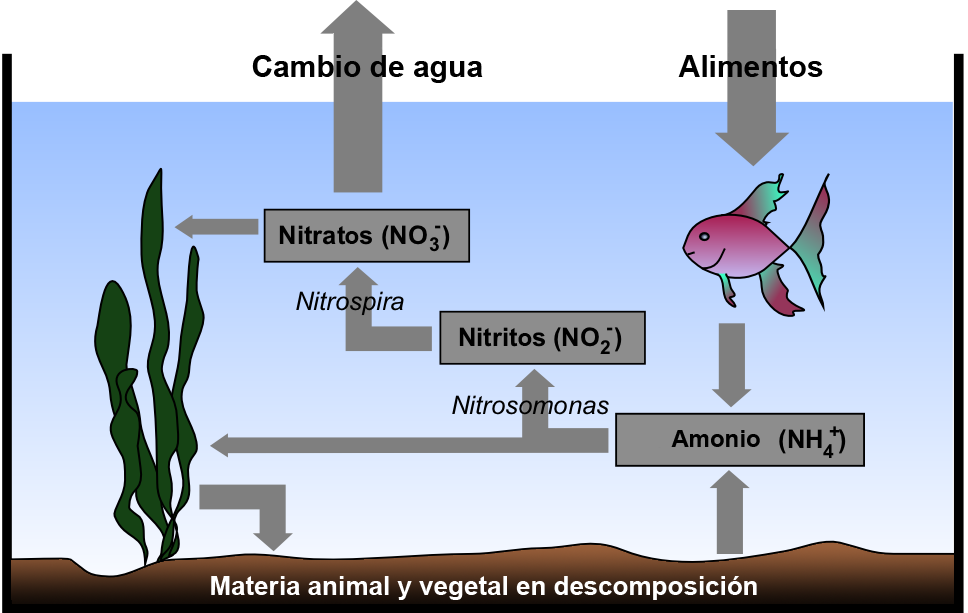
Strategies for Reducing Nitrate Concentration
Dealing with high nitrates during the cycle requires an effective strategy. To prevent nitrate buildup, consider optimizing your feeding practices to minimize excess waste. Integrating live plants can also absorb some nitrates, and employing nitrate-reducing filters or media helps actively manage these levels. Regularly testing your water will guide you in taking timely measures to address any nitrate spike during the cycle.
Role of Water Changes in Nitrate Management
Regular water changes are a cornerstone in reducing nitrites and nitrates. While water changes in new tanks can effectively lower nitrate concentrations, care must be taken in mature tanks to avoid disturbing the substrate, which can inadvertently release nitrates back into the aquarium.
Balancing Nitrate Levels for Healthy Aquaria
You aim to maintain an equilibrium where nitrate levels support a healthy ecosystem without stressing your residents. While zero is the ideal figure for ammonia and nitrite levels, some systems, like Paul B’s long-running reef tank, demonstrate that a range of nitrate concentrations can still foster vibrant aquatic life, along with an effective system of grazers and waste management. You must deduce a maintenance routine that supports consistent nitrate reduction, safeguarding the vitality of your underwater world.
- Employ a reliable test kit to monitor water parameters regularly.
- Execute calculated feedings to reduce organic waste.
- Install live plants or nitrate-absorbing media as an additional line of defense.
- Commit to periodic water changes based on the tank’s specific needs and conditions.
- Keep your substrate clean, but be cautious of disturbances that may trigger a nitrate release.
The Cycling Process: With and Without Fish
Cycling Without Fish: A Step-by-Step Guide
Opting for cycling without fish involves introducing ammonia manually, which fosters the growth of the necessary bacterial colonies without the risk of harming any fish. This method, although perceived as quicker by some, actually requires an extended period of 10 to 14 days.
Throughout this duration, diligent water quality monitoring is crucial to prevent toxic buildup. It’s important to add regulated amounts of ammonia and to analyze the levels regularly to guide bacterial development effectively.
Pros and Cons of Fish-In Cycling
While cycling with fish can be faster and accomplished in 4 to 5 days, it entails potential risks to the fish used. One advantage is the natural and continuous supply of ammonia through fish waste.
However, the well-being of the fish is paramount, making it necessary to select hardy species and limit the number to prevent excessive waste and stress. The fish-in method demands careful assessment to maintain water parameters in safe ranges for the aquatic inhabitants.
Safety Measures During Fish-In Cycling
When engaging in fish-in cycling, incorporating safety measures is essential to protect your aquatic life from high nitrites and ammonia. Regular testing lets you act swiftly in case of rising ammonia levels that could necessitate emergency interventions such as partial water changes.
Employing detoxifying agents, like ‘First Defense,’ to neutralize harmful elements in tap water before introduction into the tank is also vital. Furthermore, attentiveness to detail in feedings and cleanliness helps maintain an environment conducive to fish health and cycle progression.
| Cycling Method | Duration | Ammonia Source | Considerations |
|---|---|---|---|
| Fishless Cycling | 10 to 14 days | Manually added ammonia | Requires constant water monitoring and controlled ammonia addition |
| Fish-In Cycling | 4 to 5 days | Waste from hardy fish | Risks to fish health; manage feeding and waste, conduct regular water testing |
Troubleshooting Common Issues
Addressing Stalled Nitrogen Cycles
Addressing stalled nitrogen cycles begins with understanding their causes. Elevated ammonia or nitrite levels can exert inhibitory effects on the bacterial communities essential for cycling.
If you detect ammonia or nitrite concentrations above 5 mg/L-N, it’s crucial to hold off on adding more ammonia. Reliable test kits can aid in monitoring these parameters, while substantial water changes can efficiently dilute excessive nitrites, assisting in the reactivation of the cycle.
Responding to Unusually High Nitrite Peaks
Responding to high nitrite peaks swiftly is vital to the health of your aquarium’s inhabitants. Instead of relying on chemicals that may stall cycling, implementing water changes of around 33-50% can effectively mitigate high nitrites. This approach avoids substrate disturbance, which can exacerbate the condition by releasing more nitrites into the water.
Long-term Solutions for Cycle Stability
Ensuring long-term cycle stability solutions involves several key strategies. Among these, it’s advisable to avoid chemical treatments that remove ammonia and focus on establishing the correct conditions for aquarium cycling, such as adequate bacterial colonization areas.
Media made from high-tech materials like glass or ceramic may necessitate prolonged periods for bacterial growth; thus, confirm that these media are kept clean to facilitate water movement. A chloramine-free and chlorine-free aquatic environment is also paramount, preventing temperature shocks while shipping live nitrification bacteria.
For specialized tanks, which may have distinct cycling challenges, patience is a virtue, or you may bolster your setup with additional nitrifying bacteria to accelerate the cycle.
- Pause additional ammonia application when levels are high to avoid further cycle stalling.
- Perform sizeable water changes to dilute nitrite levels rather than applying chemical solutions.
- Avoid overuse of ammonia-removing agents to maintain the necessary cycle dynamics.
- Ascertain that your aquarium’s setup before initiating the cycle is aligned with best practices for bacterial colonization.
- Ensure space-age media is adequately cleaned to permit unobstructed water flow and effective bacterial settlement.
- Maintain your water’s quality using dechlorination like ‘First Defense’ to neutralize tap water chlorine and chloramines.
- For specialized aquarium systems, consider adding supplemental nitrifying bacteria or employ patience as these systems cycle.
Conclusion: Maintaining a Healthy Aquarium
Regular Monitoring and Maintenance
Your journey in maintaining a healthy aquarium includes consistent monitoring of water parameters. By conducting regular tests for ammonia, nitrite, and nitrate levels, you are positioning your aquarium for success and preventing the adverse effects of New Tank Syndrome. This level of maintenance is essential for ensuring that your aquatic residents thrive, as balanced water chemistry is the lifeblood of their underwater ecosystem.
Preventative Strategies for Future Cycles
Looking forward, implementing preventative strategies for future cycles can be a game-changer in aquarium care.
Utilizing established resources like seeded filters, incorporating commercial nitrifying bacteria products, or selecting hardy fish species are just a few methods to jumpstart the cycling process safely. Each decision should be tailored to your specific setup, taking into account the unique needs and dynamics of your tank to foster long-term stability and health.
Importance of Ongoing Education and Research
Aquarium management is an evolving science, and staying ahead involves immersing yourself in ongoing education and research. The aquarium hobby is rich with continual discoveries and innovations that can enhance your fishkeeping experience.
By staying informed on the latest trends and techniques, you can fine-tune your approach to reducing nitrites and nitrates, bolster biological filtration, and ensure the perpetual well-being of your fish tank inhabitants.

